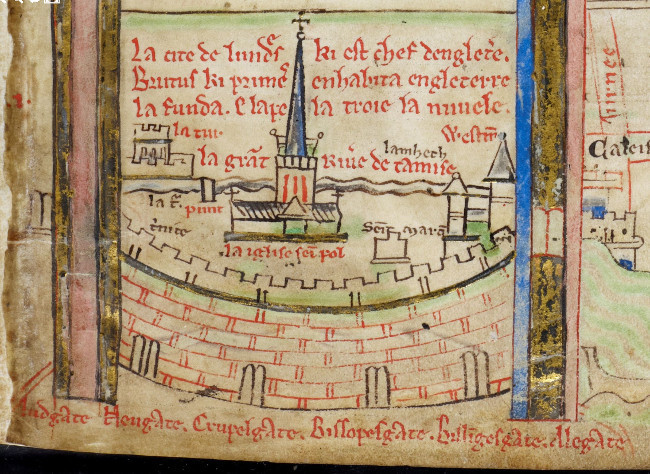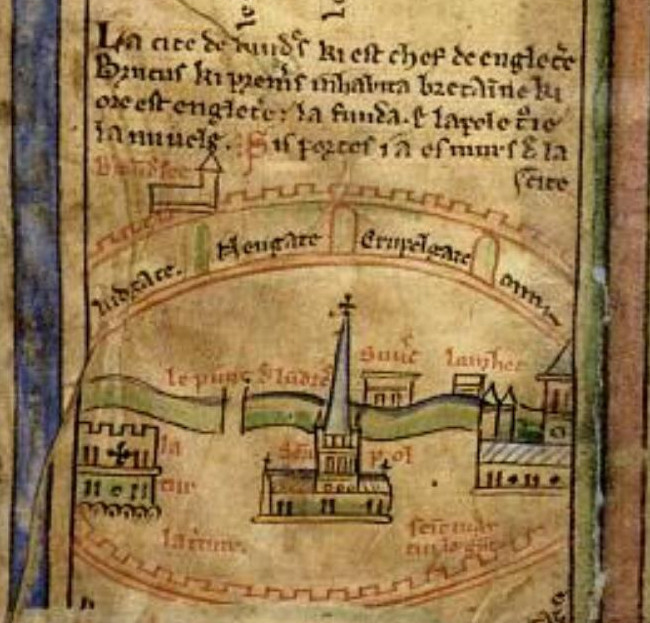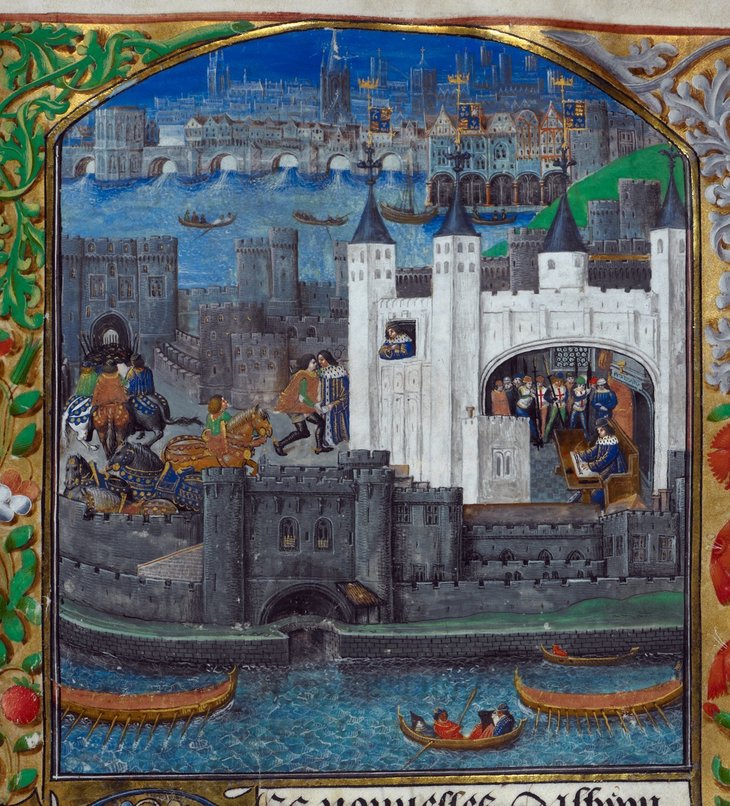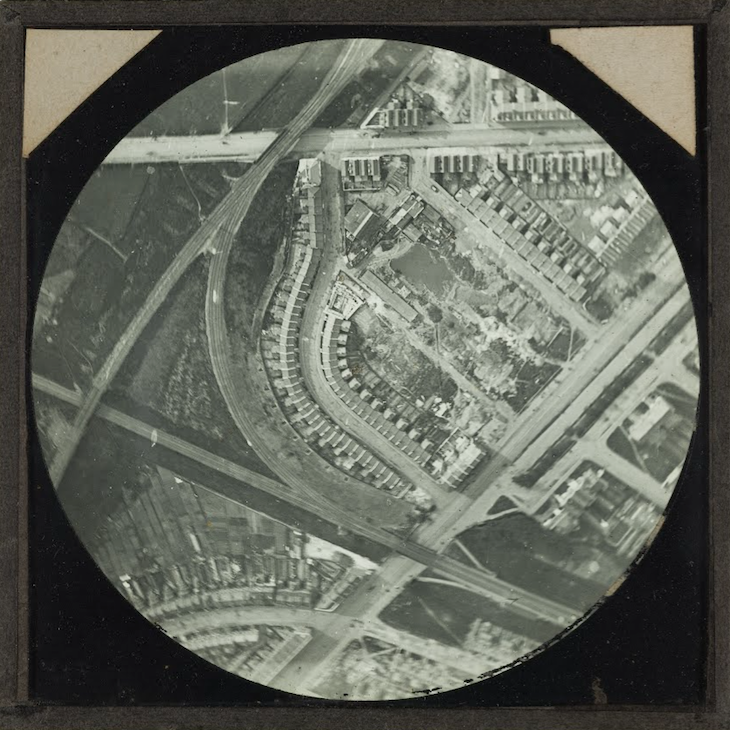Billions of photos of London must exist. Tens of billions. We've got half a million of them in the Londonist Flickr group alone.
But did you ever stop to think: what was the very first image of London ever drawn or captured?
The oldest depictions of London

Curious fact: we have almost no visual record for about two-thirds of London's history. Not a single sketch or painting of the city survives before about 1250 (that's 1,200 years after the Romans founded Londinium). The only exceptions are tiny images of single Roman buildings, such as the one found on a coin of Constantius from the late third century, and a crude depiction of the first Westminster Abbey on the Bayeux Tapestry.

The first known city depictions come from two tomes by Matthew Paris: the Historia Anglorum and Chronica Majora. Both are forms of map, showing pilgrims how to get from London to Jerusalem.

Both images depict a number of London landmarks, which are easily deciphered, even by those of us who struggle to read Anglo-Norman. The centrepiece of each is the spired form of Old St Paul's — which would have been New St Paul's at the time, and actually still under construction.
The two images also show the City's strong walls. These were first built in the Roman period, but the visible crenellations in the image were only added in the early Norman period — not long before Matthew Paris sketched them here.
Six of the city's gates are named in the top image, as are a number of churches and the Tower of London. The old London Bridge, only 50 years old at this point, can clearly be seen spanning the Thames. Curiously, the city walls are shown crossing the river, which of course they never did.
A more detailed exploration of this fascinating glimpse of medieval London can be found here. The itinerary maps are held by the British Library.
The earliest accurate depiction of London

'Accurate' might be a bit of an overstatement here, though this 15th century view of the Tower of London and Thames is a marked improvement on any earlier image.
It comes from a manuscript collecting the poetry of Charles d'Orleans, cousin of the French king, and was painted some time in the second half of the 15th century. Charles was imprisoned in the Tower for many years after his capture at Agincourt. You can see him in the picture, scribbling away with a quill inside the cutaway White Tower.
Given its age, the topographical detail here is astonishing. The White Tower itself is easily recognisable to the modern eye, as is Traitor's Gate on the Thames in the foreground. Towards the back of this scene is an accurate depiction of Old London Bridge, and behind that many of the church spires of the City. Could that be Westminster Hall to the top left?
This historic volume, held at the British Library, contains not only the first true picture of London, but also what's widely regarded as the world's first Valentine's poem. The unfortunate Charles wrote a few lines of love to his wife Bonne of Armagnac, in his first year of imprisonment. He would not be released for 24 years, during which time his Bonne had died.
The oldest photograph of London

This still familiar view of Whitehall is usually reckoned to be the earliest surviving photograph of London. It was taken by Frenchman Monsieur de St Croixin in 1839 using the technique pioneered by Louis Daguerre a few months before.
It focuses on the equestrian statue of Charles I, which is considered the centre of London, from which all distances are measured. As such, it's a fitting subject for the earliest photographic image of London.
Ghostly forms of the people who stayed still long enough to be captured on the image can just be seen to the right of the statue, and on carriages in the distance. These, then, are the first Londoners ever to be photographed. We will never know who they were.
The original, which is flipped left/right as part of the Daguerrotype process, is held by the V&A.
The oldest aerial image of London

Aerial photography of the entire city is now at our fingertips thanks to services like Google Maps. But in the 19th century, the practice was extremely challenging owing to the difficulties of taking a sharp image from a moving balloon.
One of the key pioneers was Cecil Shadbolt, who took numerous photographs of the capital from above in the 1880s. The earliest is this vertical view of Stamford Hill/South Tottenham from a height of 610 metres. The image encapsulates Stonebridge Road, Stamford Hill and Seven Sisters Curve, as well as part of the Tottenham and Hampstead Junction Railway. How many people who live in these streets know about their unique place in history?
This image is considered the earliest surviving aerial shot of any place in Great Britain. Shadbolt would take many more, now held as the Shadbolt Collection by Historic England. Sadly, this daring photographer died aged 33 following a balloon accident over Crystal Palace.



